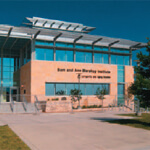
During normal aging and various neurodegenerative diseases such as Alzheimer’s, Lou Gehrig’s and Parkinson’s diseases, proteins become unfolded or clump together, thereby losing their function and damaging the cells and tissues.
This month, researchers from the Health Science Center’s Sam and Ann Barshop Institute for Longevity and Aging Studies reported the first successful method to screen these abnormal proteins. The finding was posted online Feb. 7 in the journal Biochemistry, published by the American Chemical Society.
“For the first time, we have described a method that enables investigators to identify and screen for hundreds of proteins that have become unfolded or aggregated,” said Asish Chaudhuri, Ph.D., assistant professor of biochemistry and cellular and structural biology and Barshop Institute member. “Identification of specific proteins that are structurally altered, especially prior to the onset of the disease, could be an important step toward understanding the underlying mechanism of the disease.”
Barshop Institute Director Arlan G. Richardson, Ph.D., South Texas Veterans Health Care System career scientist and Health Science Center professor of cellular and structural biology, added: “This method could be useful as a diagnostic tool and will help researchers to understand more about the role of protein unfolding and aggregation in aging and neurodegenerative diseases. Moreover, the identified proteins could be used as potential biomarkers for early diagnosis of disease.”
The work was supported by the U.S. Department of Veterans Affairs, the National Institute on Aging and the Ellison Medical Foundation. The new research is part of the VA Neurodegeneration Research Center recently established in the Barshop Institute.
The researchers used an acid, urea, to induce structural changes in the proteins. Next, they adapted an existing ultraviolet light labeling approach by incorporating a fluorescent probe. The surfaces of abnormal proteins now stood out. “The result,” Dr. Richardson said, “was a much clearer picture of which proteins have become irregular in form and function. We think our colleagues worldwide will quickly begin using this technique in a great variety of research studies.”
About 4.5 million Americans have Alzheimer’s, and between 500,000 and 1 million have Parkinson’s. About 5,600 new cases of Lou Gehrig’s disease are diagnosed in the U.S. each year.
In acknowledgements of the paper, Drs. Chaudhuri and Richardson; Holly VanRemmen, Ph.D.; Anson Pierce, Ph.D.; and Eric deWaal, Ph.D., thank their late colleague, Paul M. Horowitz, Ph.D., longtime professor of biochemistry at the Health Science Center, for his research contributions. Dr. Horowitz died in 2005 after a long illness.

